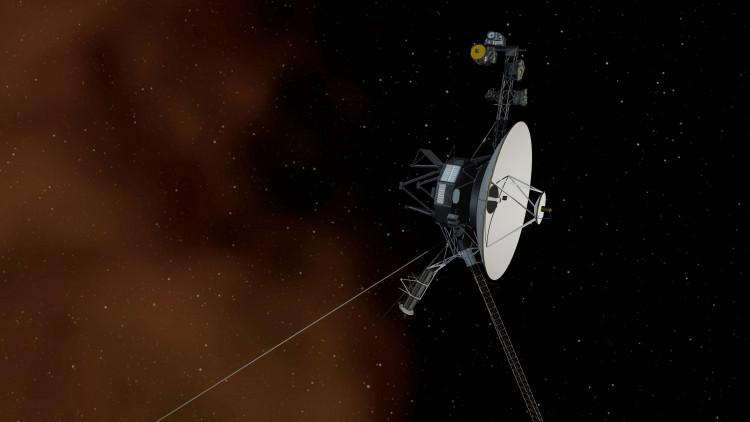The Voyager 1 probe is still exploring interstellar space 45 years after its launch, but it has run into a problem that the spacecraft's crew on Earth is baffled by.
Despite its elderly age and 14.5 billion-mile (23.3 billion-kilometer) distance from Earth, Voyager 1 continues to function well. It can also receive and execute NASA commands, as well as collect and send back science data.
The attitude articulation and control system, which controls the spacecraft's orientation in space, however, does not match what Voyager is actually doing. The attitude articulation and control system, or AACS, keeps Voyager's high-gain antenna pointing at Earth so it can transmit data to NASA.
"A mystery like this is sort of par for the course at this stage of the Voyager mission," Suzanne Dodd, project manager for Voyager 1 and its twin, Voyager 2, at NASA's Jet Propulsion Laboratory in California, said in a statement.
The problem is with Voyager 1's attitude articulation and control system, or AACS, which keeps the spacecraft and its antenna oriented correctly. And the AACS appears to be operational, as the spacecraft is receiving commands, acting on them, and transmitting science data back to Earth with the same signal strength as before. Nonetheless, the AACS is delivering garbage telemetry data to the spacecraft's operators.
The NASA statement does not disclose when or how long the problem has existed.
The agency says that Voyager personnel will continue to investigate the issue and attempt to either fix or adapt to it. That's a slow process, since a signal from Earth currently takes 20 hours and 33 minutes to reach Voyager 1; receiving the spacecraft's response carries the same delay.
If the team doesn't determine the source of the issue, they may just adapt to it, Dodd said. Or if they can find it, the issue may be solved by making a software change or relying on a redundant hardware system.
Voyager 2, a twin spacecraft, is still operating normally in interstellar space, 12.1 billion miles (19.5 billion kilometers) from Earth. In comparison, Neptune, the planet furthest distance from Earth, is only 2.9 billion miles away. Both probes were launched in 1977 and have considerably outlived their intended mission of orbiting planets.
They are now the only two spacecraft collecting data from interstellar space and providing insights into the heliosphere, or the bubble formed by the sun that extends beyond our solar system's planets.




